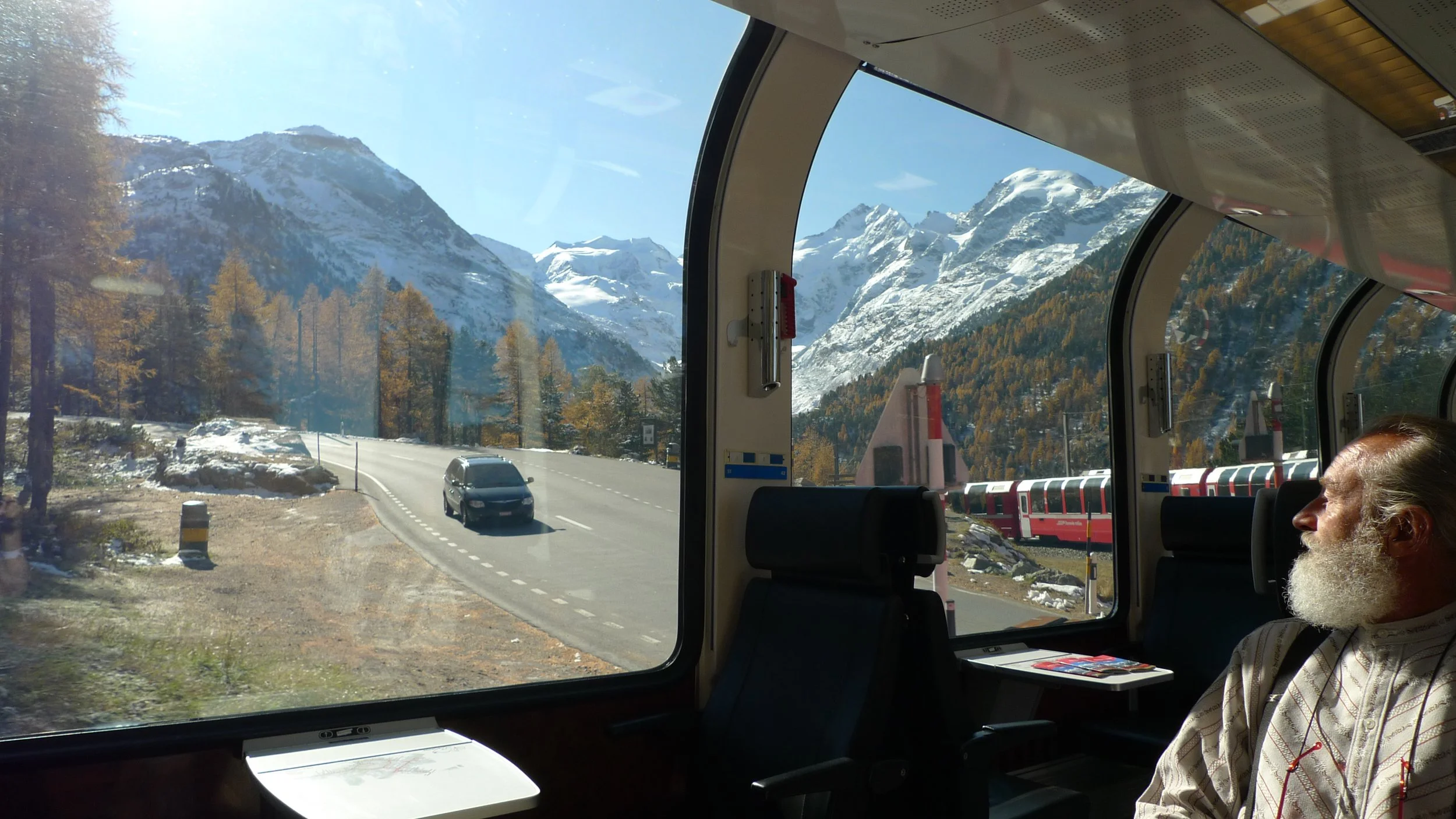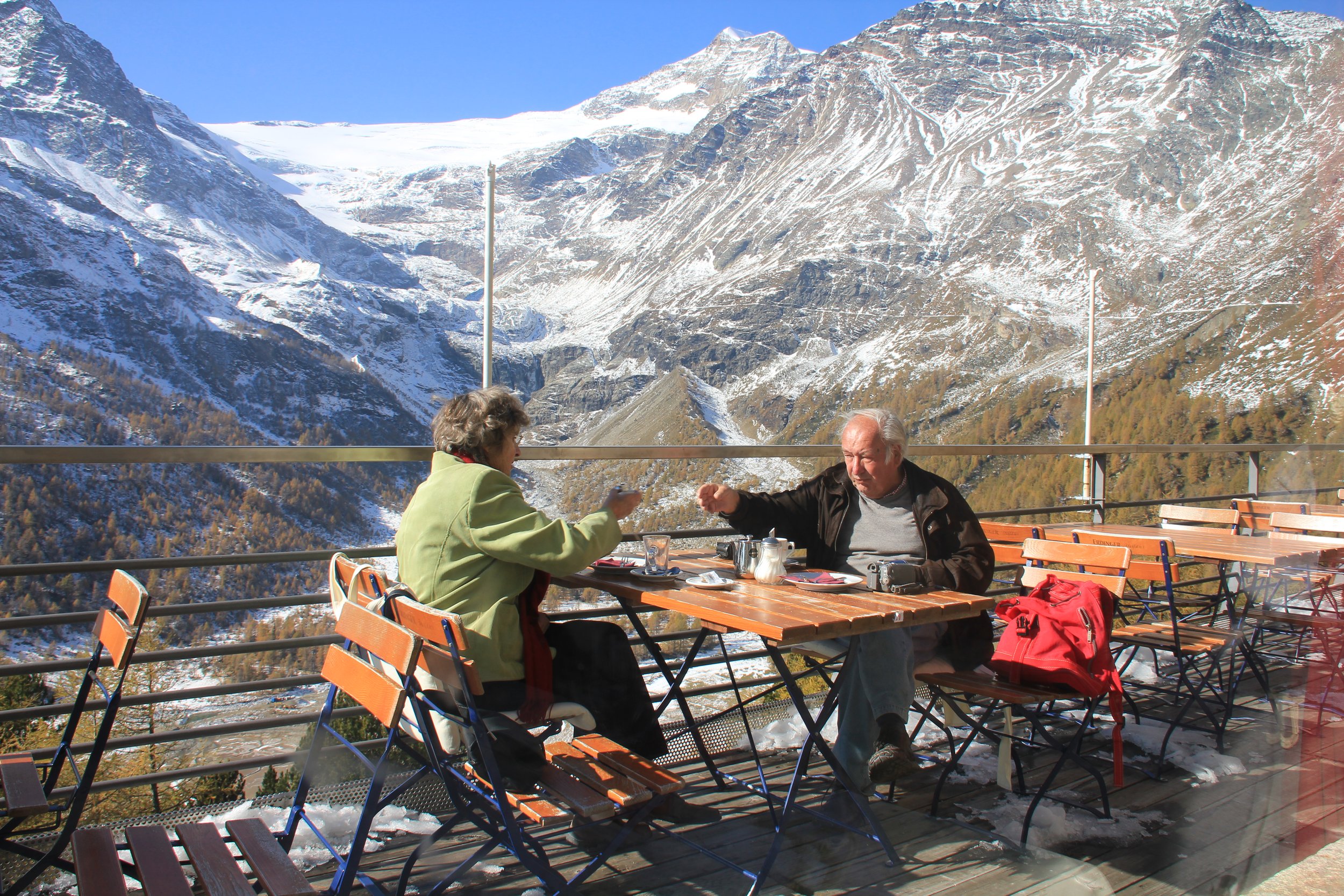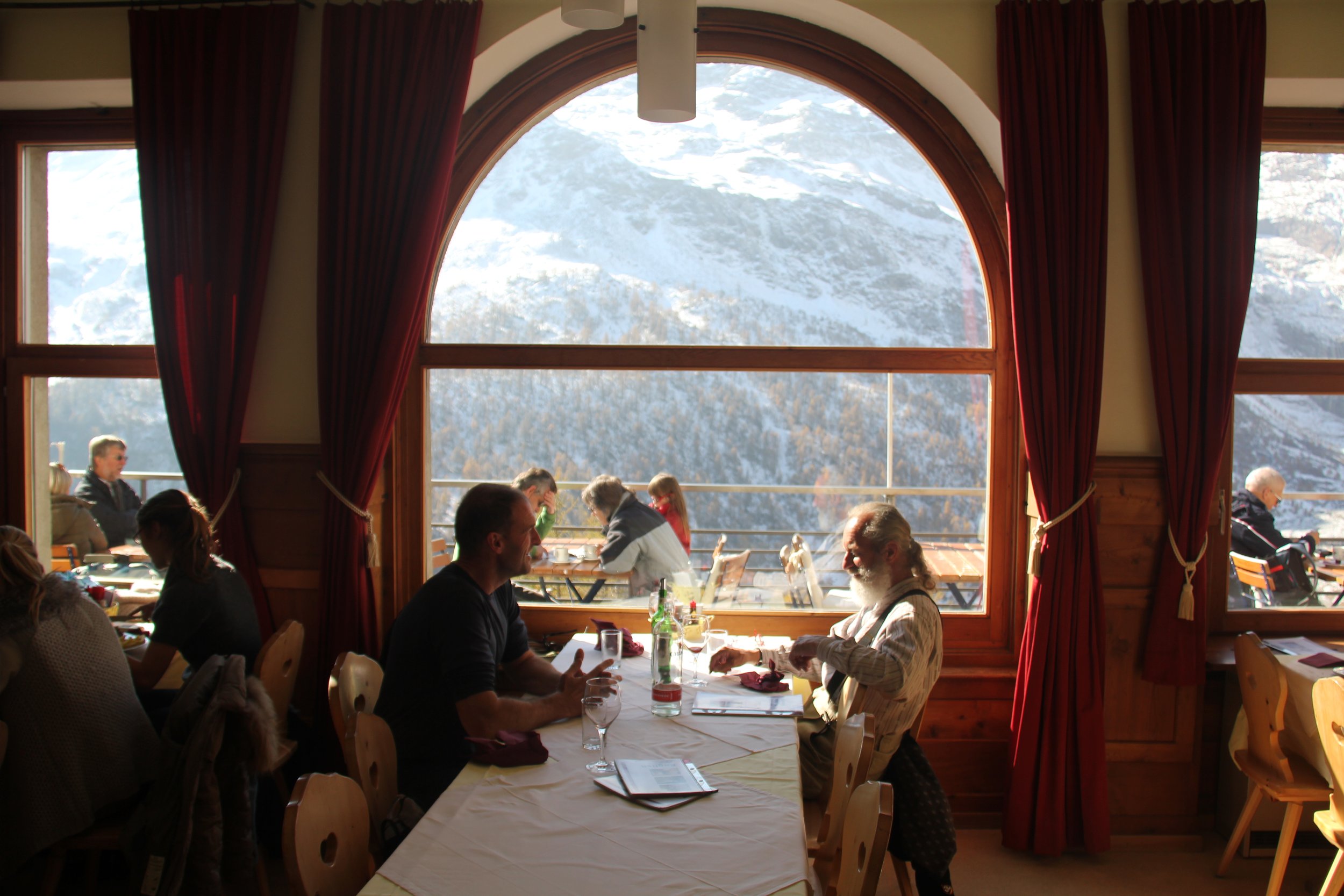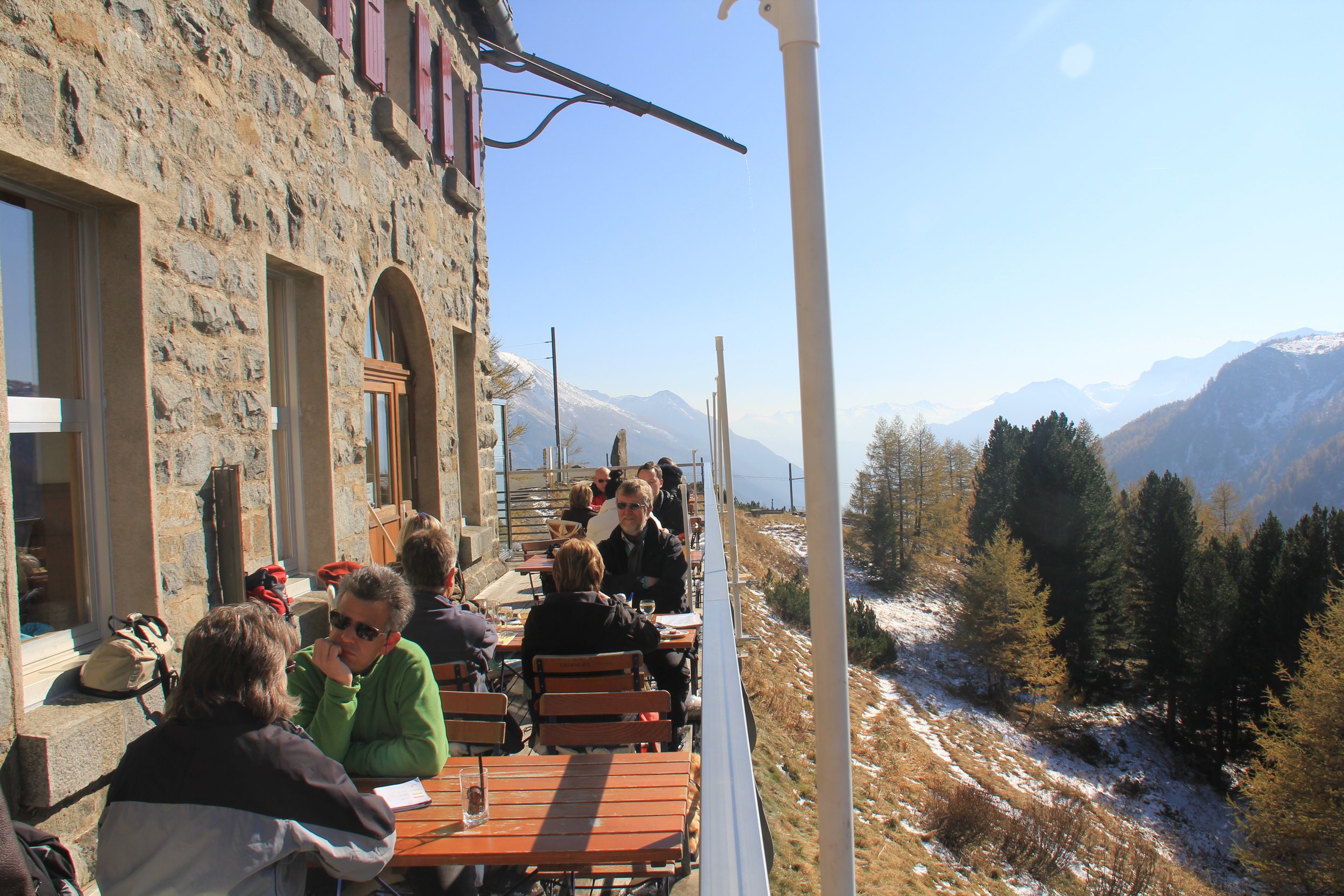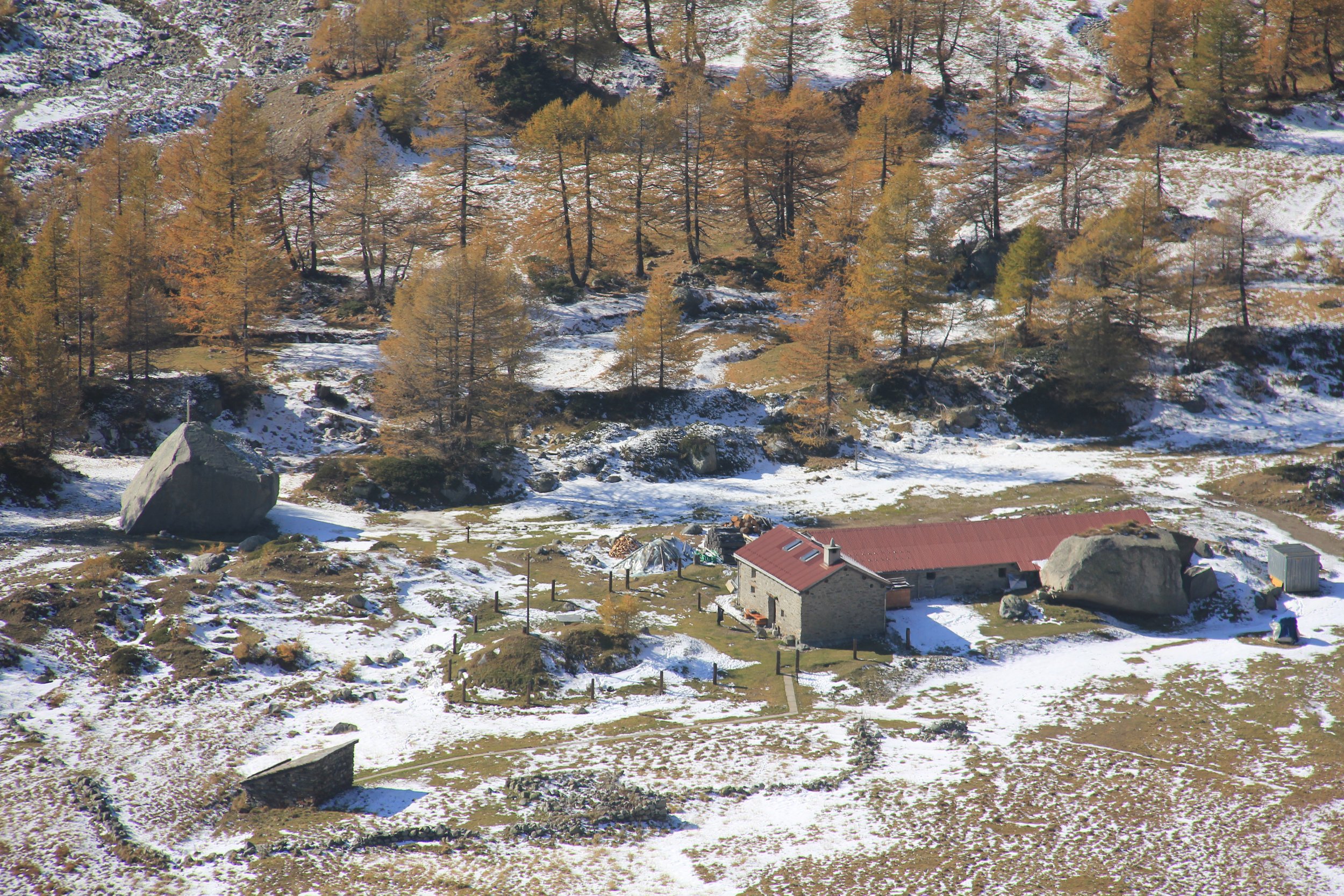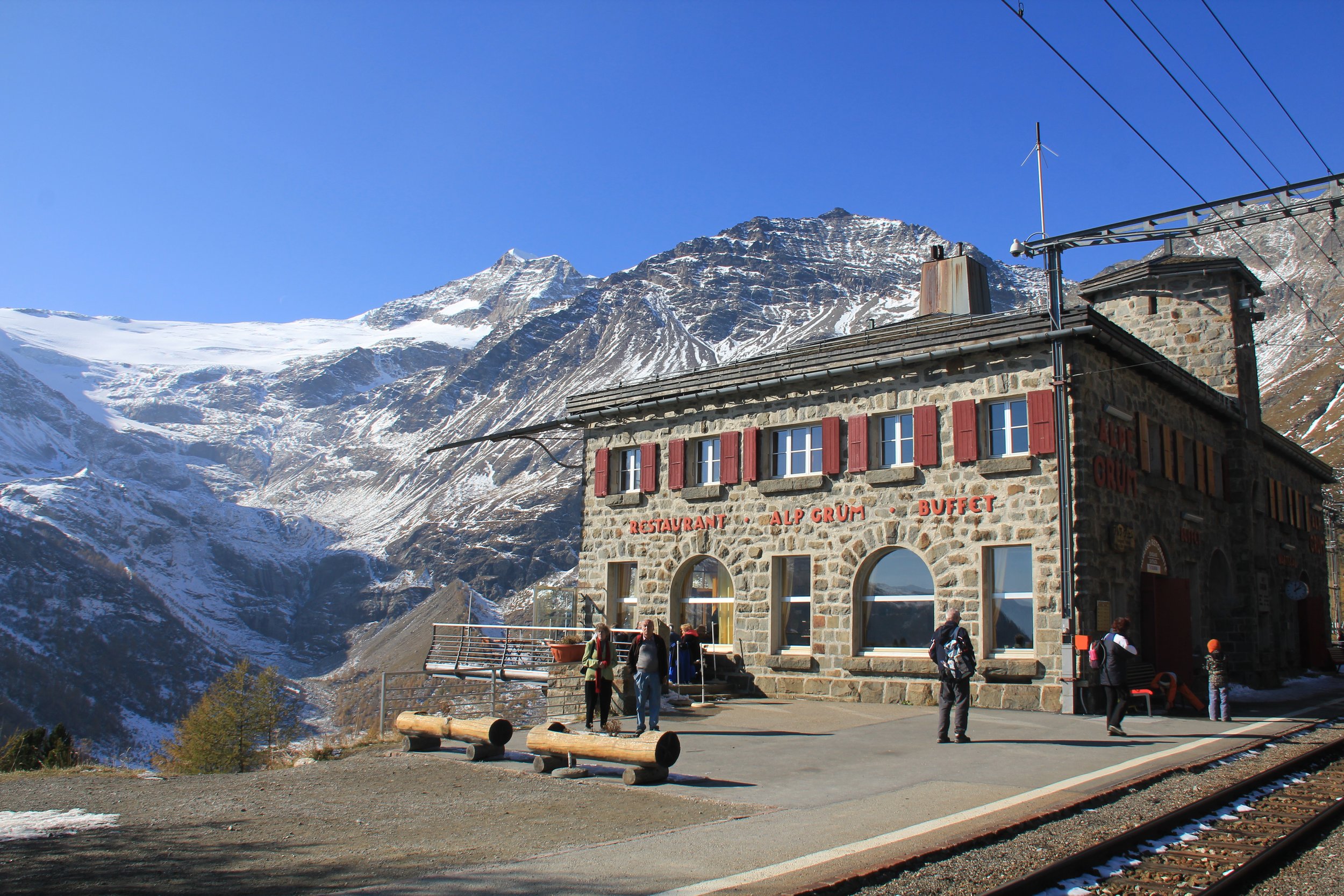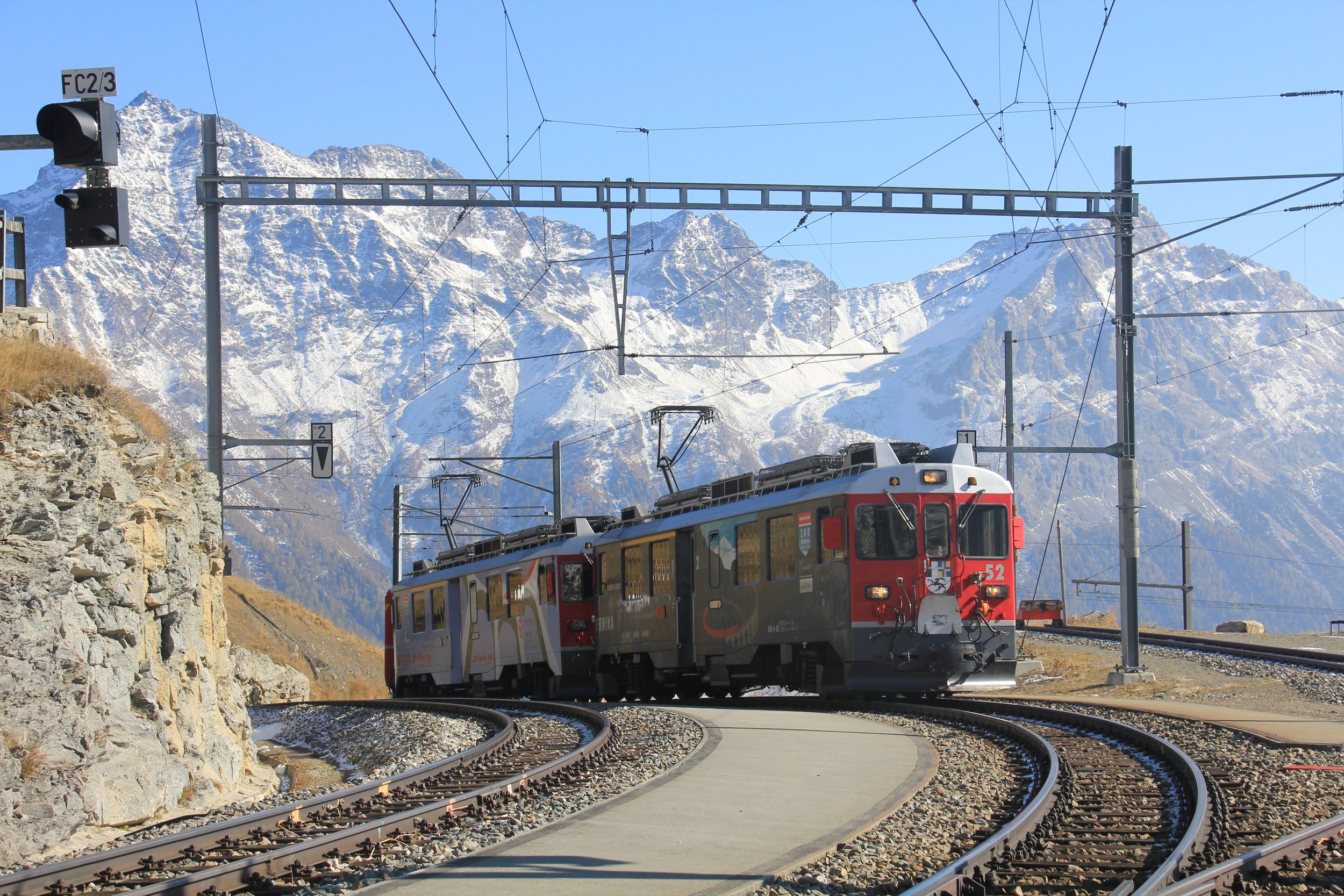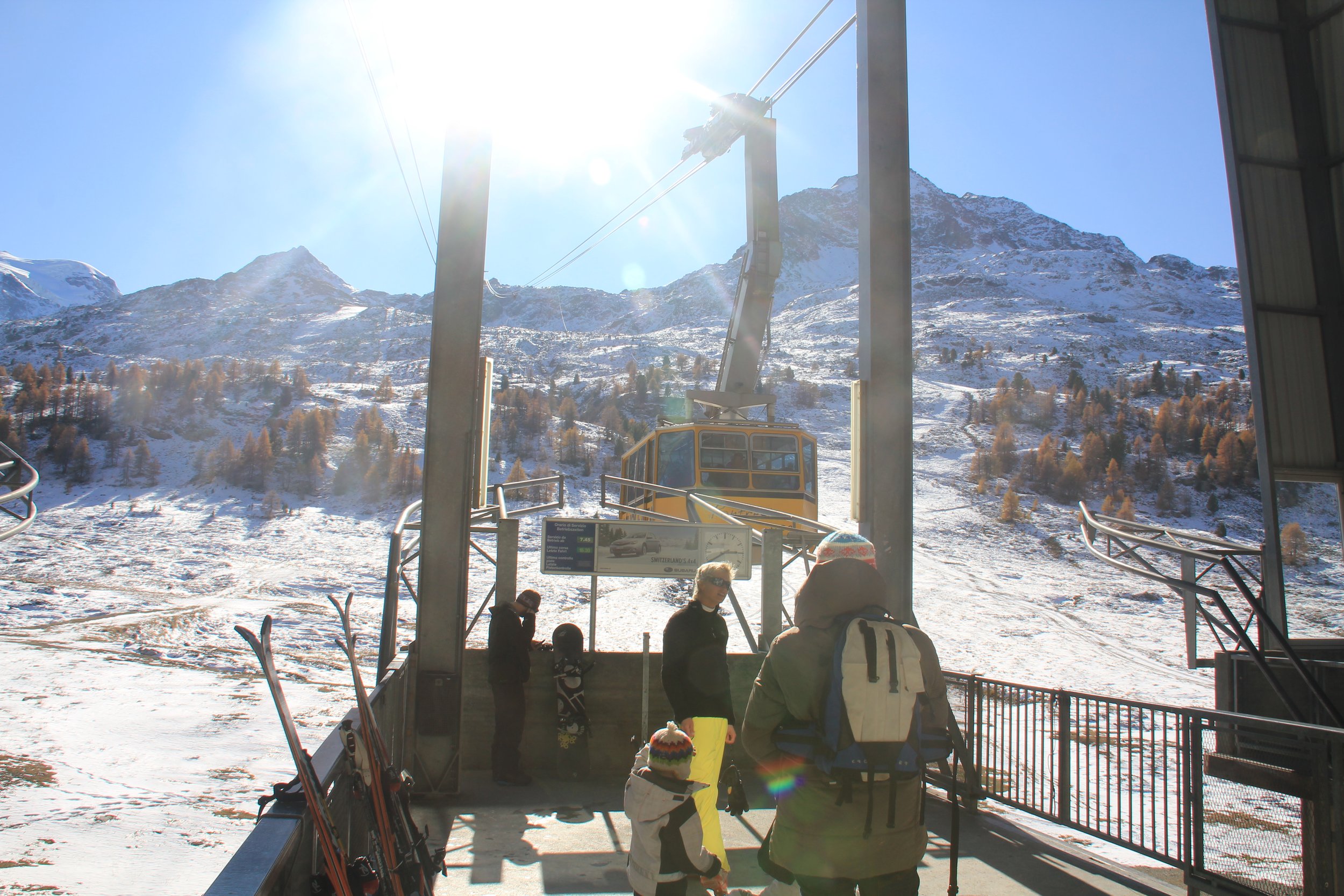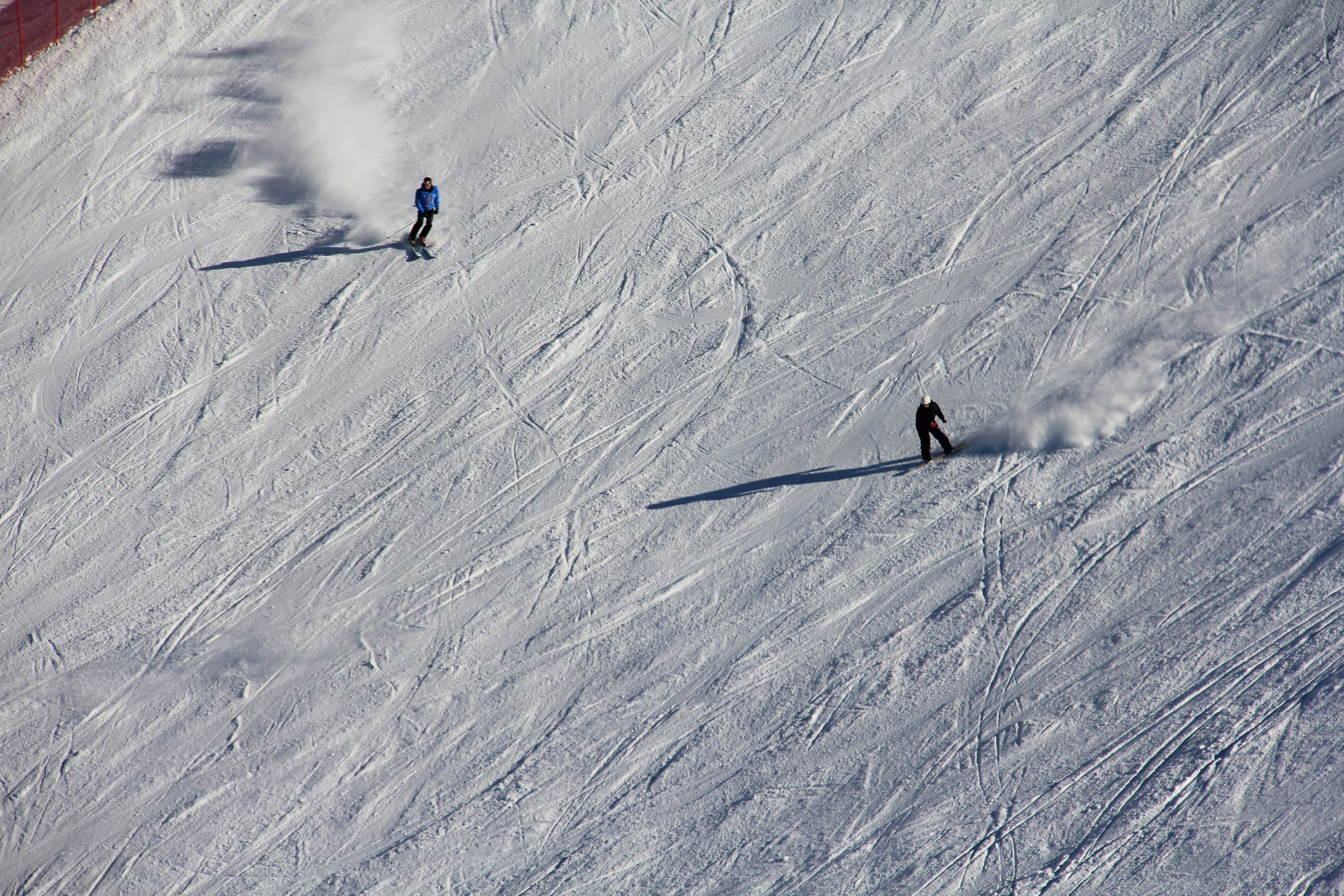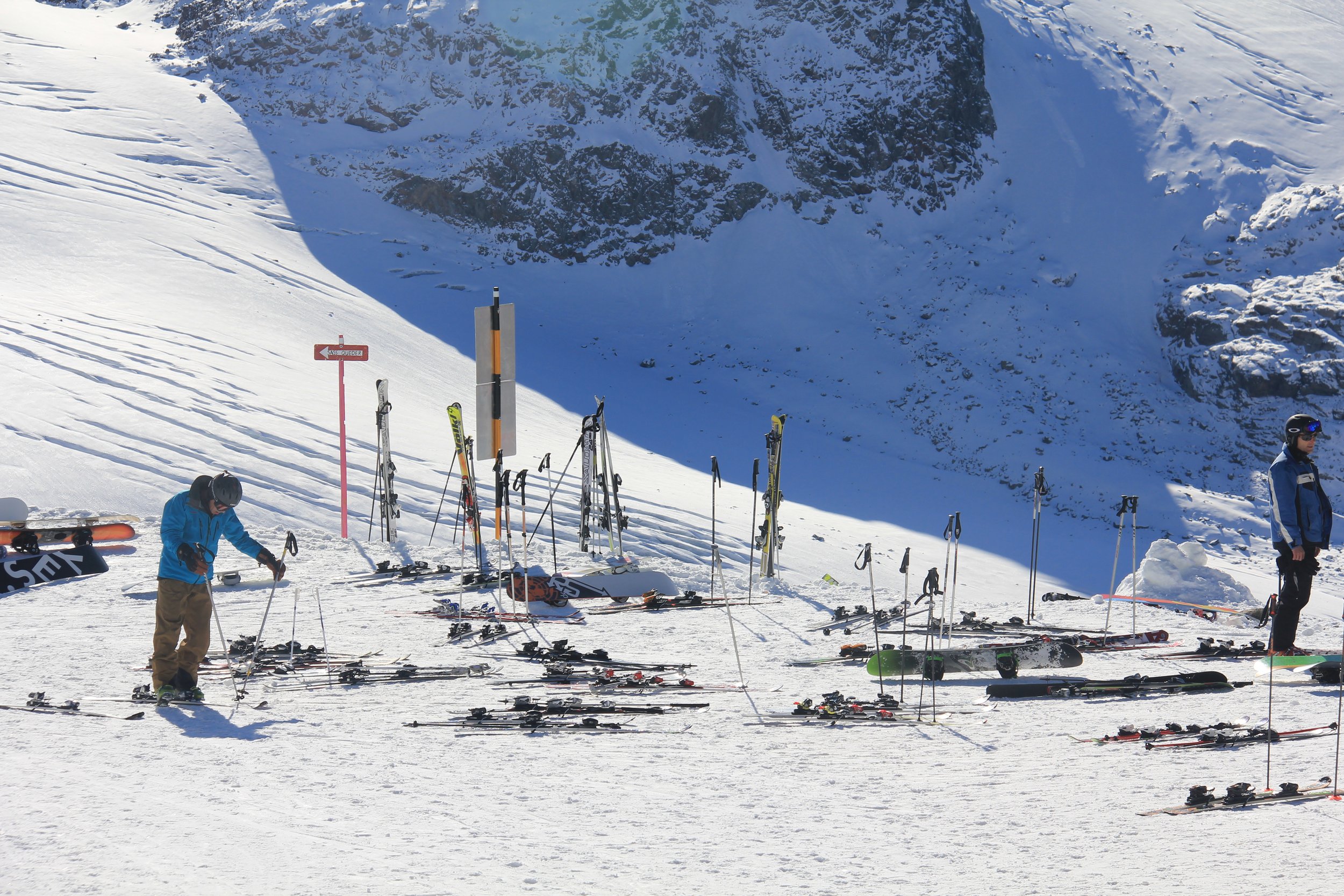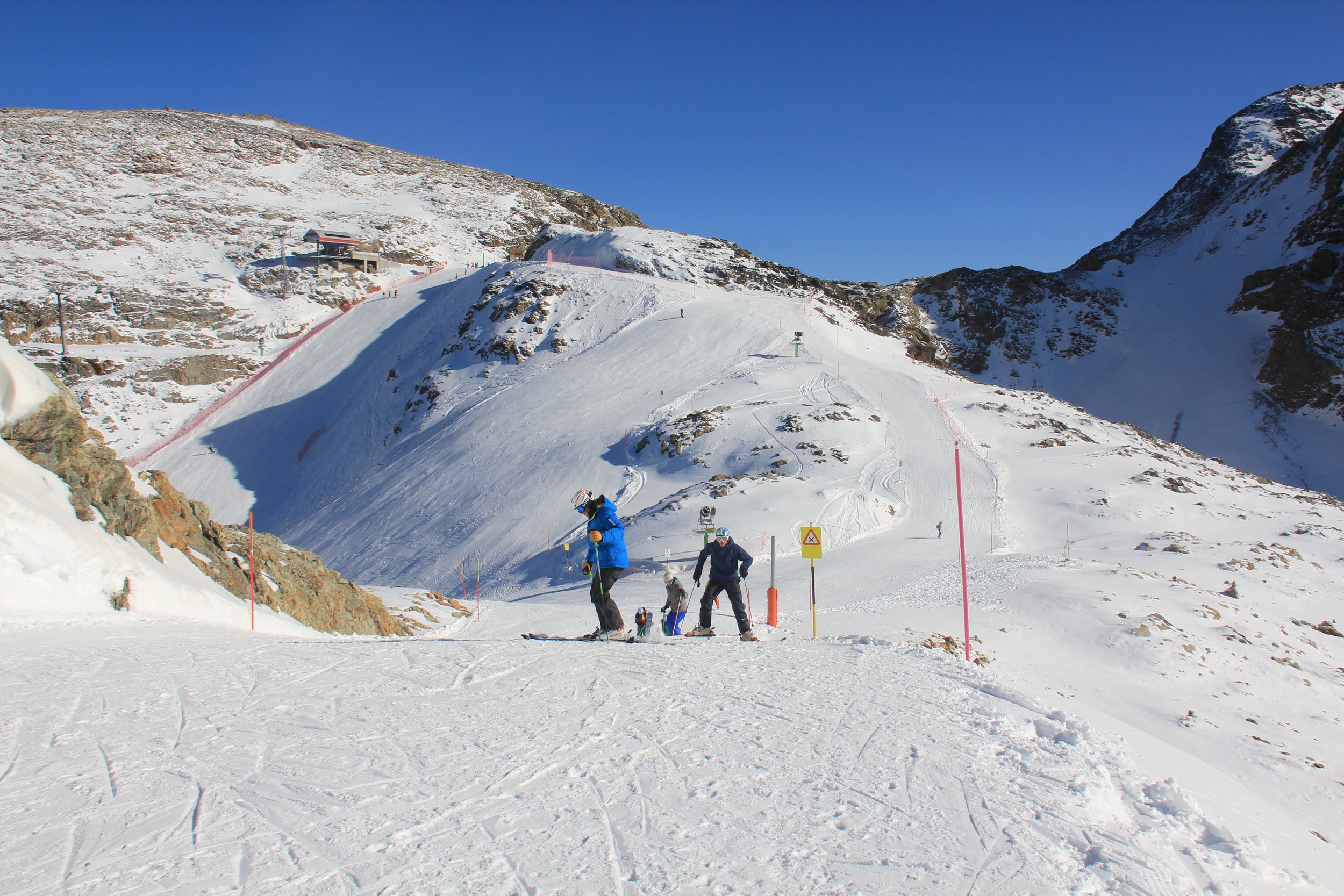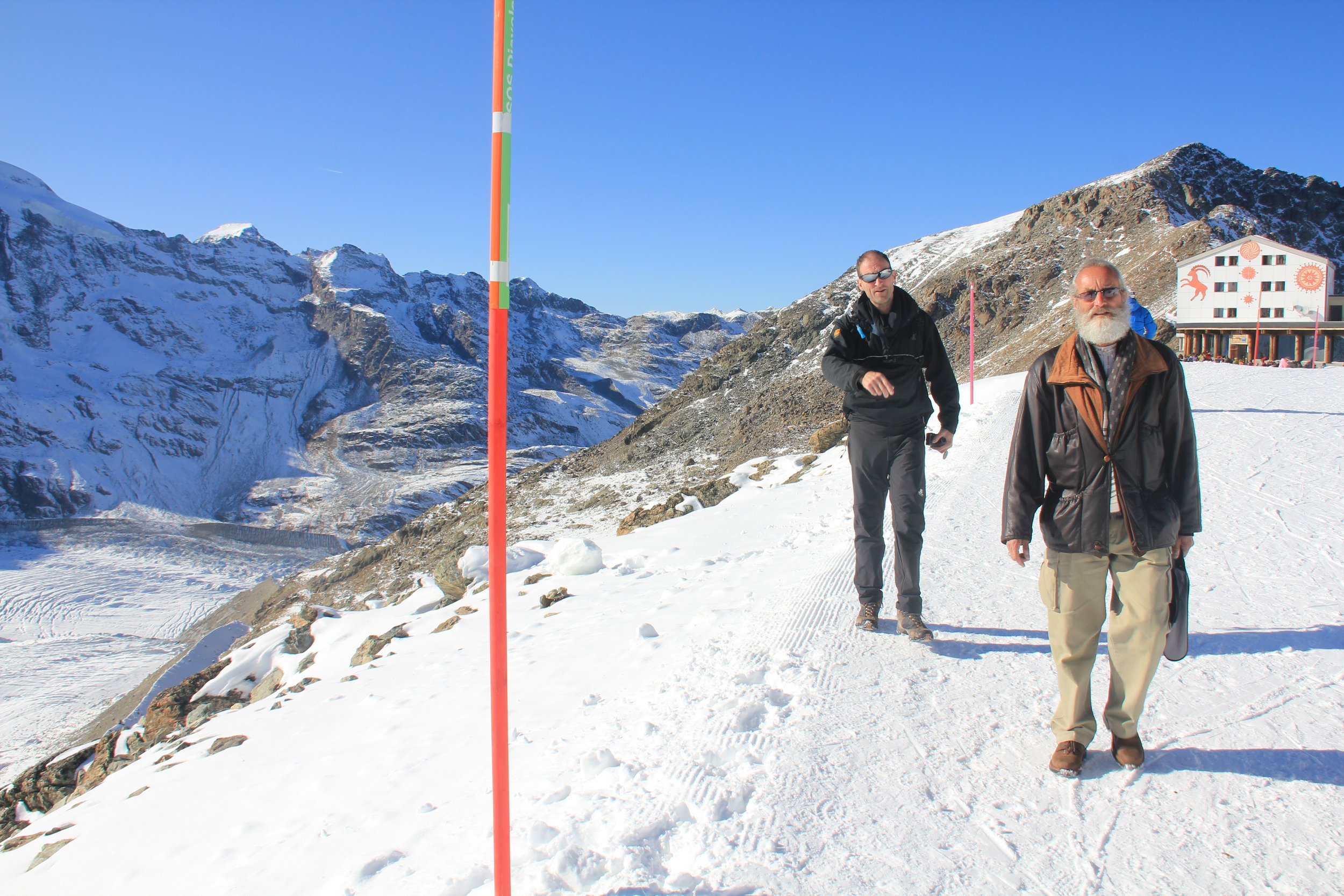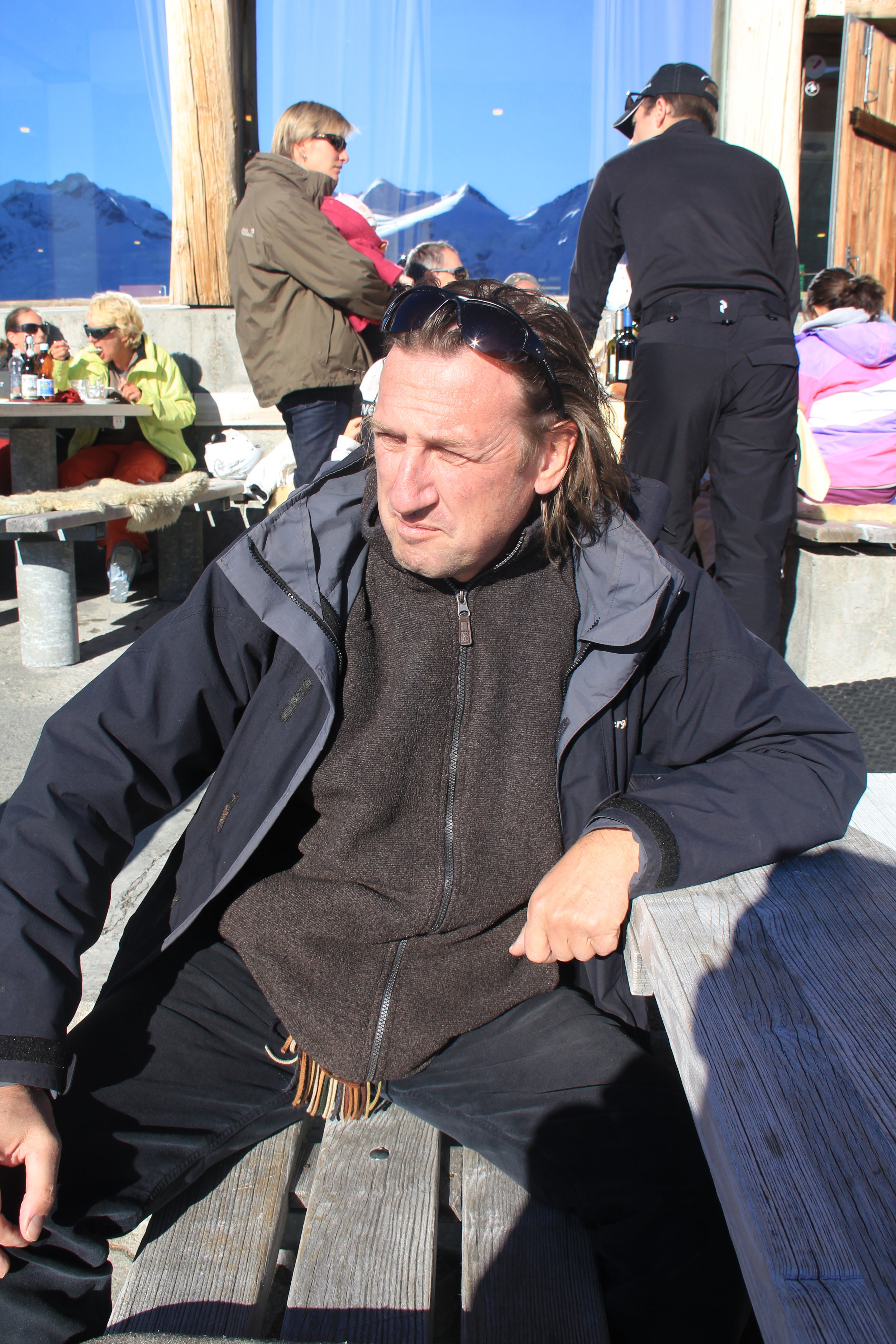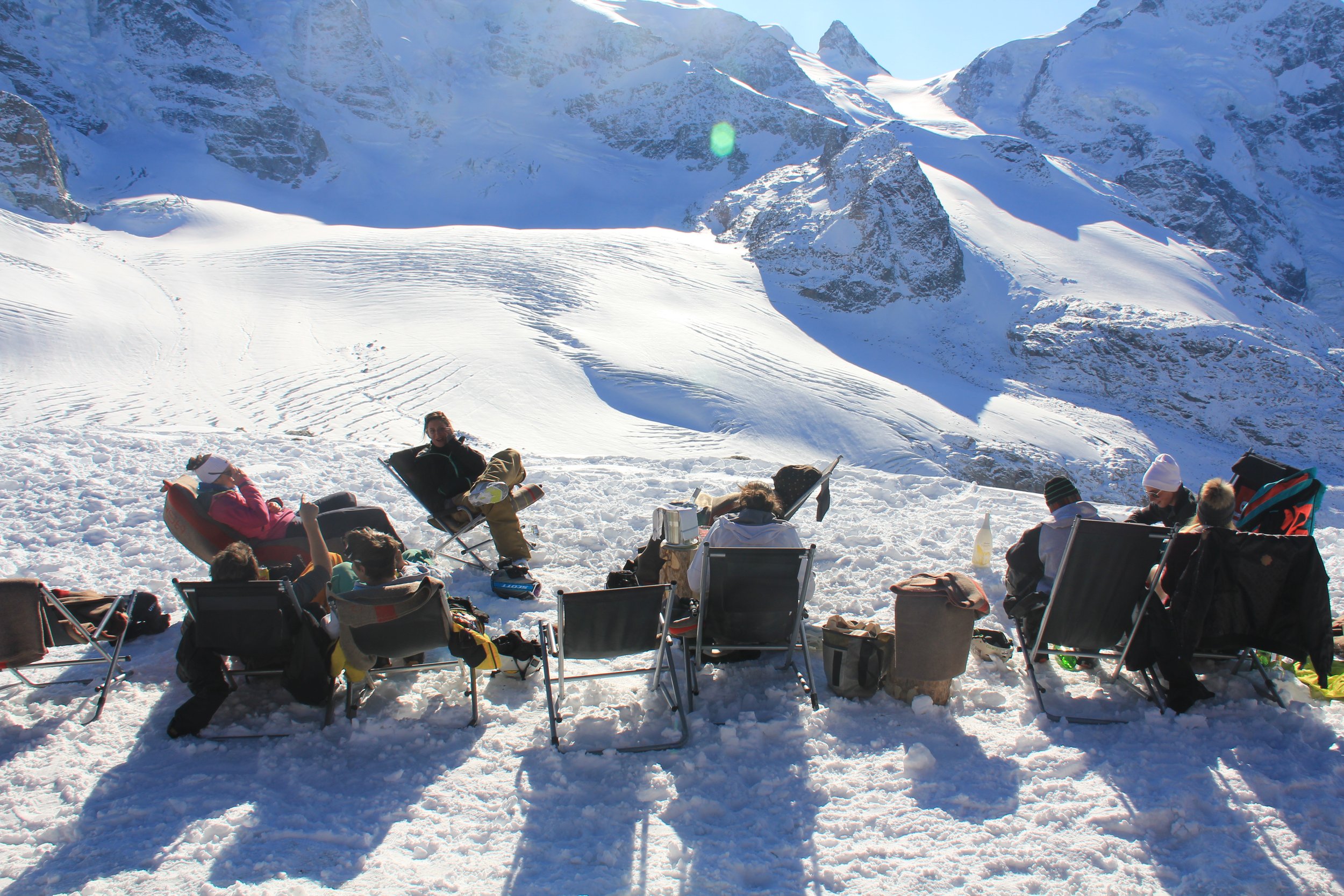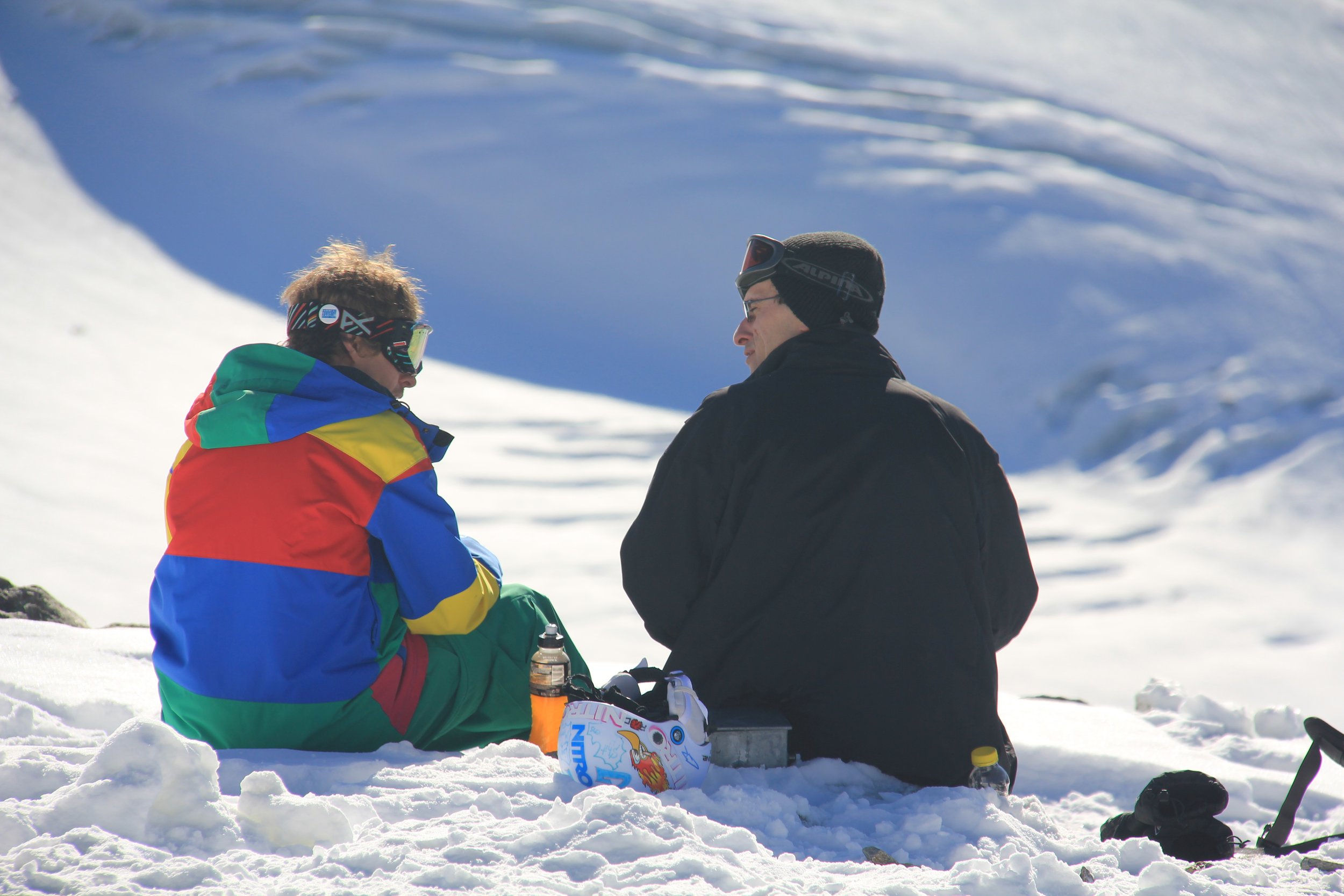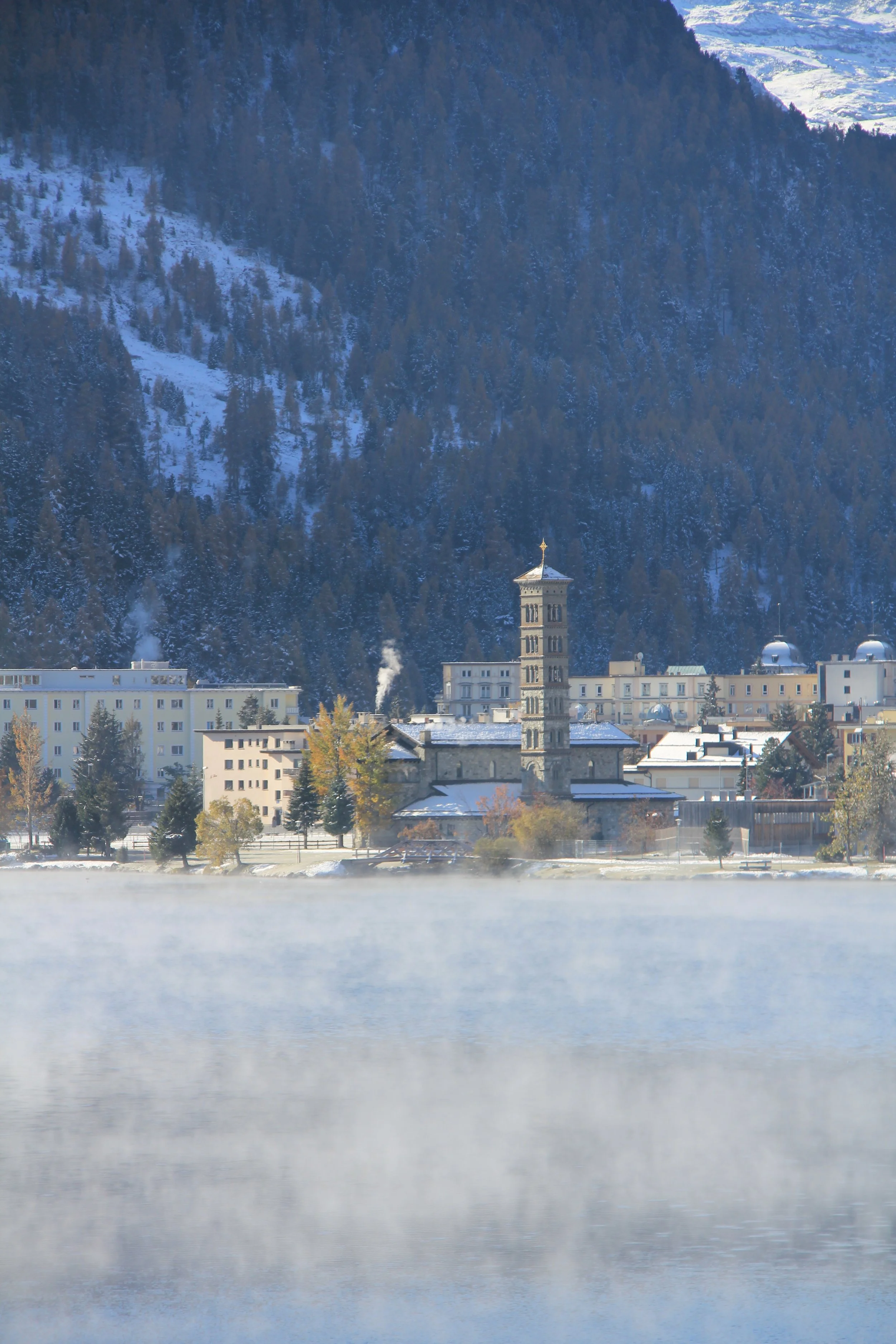Bernina Express
The line up from the Swiss town of Chur is one of the only railways to have been granted World Heritage Site status. And just about every inch of it deserves the accolade.
Basically, the famous Bernina Express connects Chur with Poschiavo and Tirano in Northern Italy by crossing an extremely tall range of mountains. The entire trip is a four hour journey that crosses 196 bridges and passes through 55 tunnels. Its highest point is the Bernina Pass at an altitude of 2,253 metres. Originally known as the Albula line, it was constructed between 1898 and 1904, and has been operated by the Rhaetian Railway ever since.
After it reaches the Albula River and crosses the Landwasser Viaduct the train must start ascending at a rate which doesn’t come easily for extremely heavy machinery on steel rails. What this means is spirals – and, in rail terms, spirals mean only the finest Swiss engineering need apply…
Hesp and friend Wolfgang on the Bernina Express
The way in which the line corkscrews up through tunnels inside mountains only to come out in to the daylight and leap across impossibly deep gorges via elegant stone viaducts is one of the finest examples of mankind overcoming natural barriers that I’ve ever seen.
Eventually, this insane but thrilling railway emerges from a particularly long tunnel out onto the Engadine plain, where it turns upstream to head for St. Moritz station (at 1,775 metres in altitude).our first duty next day was to climb back aboard the train and head upwards once again – this time up to Alp Grüm, on the Swiss-Italian border. If we thought the previous day’s section of the Bernina Express had surpassed all other railways by getting us up to St Moritz, we were wrong…
The winding, grinding, trundling ascent over one of Europe’s highest watersheds is breathtaking – and even in autumn before the ski season had begun in earnest we were treated to frozen, white, crystalline panoramas up there at high altitude.
In this high cold zone, it was most comforting indeed to learn we’d be lunching at an old fashioned rail-side stopping place called Ristorante Alp Grüm. I liked the place immensely, not only because of its stunning views, nor solely for its welcoming, old-fashioned atmosphere, which harked back to spy-movies of yesteryear – but because I enjoyed a huge plate of Pizzoccheri. This is a local speciality involving vegetables and cheese bought from nearby mountain farms – all tossed hot with a dense, nutty, dark coloured pasta made from buckwheat.
The food was simple and wonderful – but once your high altitude hunger has abated, it’s those views and the mountains that make the long trip all the way from the West Country worth the while – even if you’re only there for a weekend like we were. I vow to return and stay in the restaurant’s small, homely hotel so that I can go off walking among these high and dramatic peaks.
Indeed, despite the first snowfall of the year, I was to enjoy at least a brief closer glimpse of the neighbouring mountains… Our next stop was back down the line towards St Moritz to a place where we took a large cable car (capable of carrying 100 passengers) up to the Diavolezza. The name means She-Devil in the local Italian - and I can only assume this refers to the height of the peaks and the all too apparent dangers that could overtake the unwary traveller in such a vertiginous place.
The cable car ascends to the middle of a great white cup in the mountains and terminates at a large modern restaurant which is the first in this region to open to skiers each year. We were there on the very first day of the season and for a country hick like me, it was amazing to see all the glamorous young things peeling off their thick ski apparel to sunbathe in deckchairs which they’d placed in deep snow. The icy white blanket at their feet was not only used for skiing, but as a natural cold storage for their bottles of champagne.
Bernina Express Fact File
Overview
The Bernina Express is a renowned scenic train route that offers passengers a spectacular journey through the Swiss Alps, connecting Chur in Switzerland to Poschiavo and further to Tirano in northern Italy. Operated by the Rhaetian Railway, this route is celebrated for its breathtaking views and engineering marvels.
Route Details
Starting Point: Chur, Switzerland
Ending Point: Tirano, Italy
Key Stop: Poschiavo, Switzerland
Length: Approximately 122 kilometers (76 miles) from Chur to Tirano
Duration: Around 4 hours
Geographical Highlights
Landwasser Viaduct: An iconic six-arch structure plunging into a tunnel in the sheer cliff face.
Brusio Circular Viaduct: A unique spiral viaduct essential for managing the altitude difference in a limited space.
Morteratsch Glacier: Offers views of the third largest glacier in the Eastern Alps.
Alp Grüm: Panoramic views of the Palü Glacier and a popular stop for hikes.
Technical Specifications
Track Gauge: Metre gauge
Traction: Electric
Highest Point: Ospizio Bernina, at 2,253 meters (7,392 feet) above sea level, the highest point on the Rhaetian Railway network.
UNESCO World Heritage Site
Since 2008, the Bernina Express route, together with the Albula Railway, has been listed as a UNESCO World Heritage Site, acknowledged for its harmonious blend of technical, architectural, and environmental mastery.
Seasonal Operations
Summer: Features lush green landscapes and full operational capacity, including the open-air cars for an immersive experience.
Winter: Provides a dramatic, snowy spectacle, with the train often seen winding through pristine white snowscapes.
Cultural Impact
The Bernina Express is more than just a train journey; it is a cultural icon that showcases the heritage and engineering prowess of Switzerland while providing a crucial link between the Swiss and Italian regions it serves. The journey not only connects geographic points but also cultures, making it a vital route for both tourism and local commuting.
Experience
Passengers can expect a comfortable journey with large panoramic windows designed to offer expansive views of the dramatic landscapes. The train typically includes amenities such as audio guides available in multiple languages, detailing the historical and environmental significance of the vistas and landmarks along the route.
Conclusion
The Bernina Express offers a unique combination of natural beauty and engineering excellence, making it one of the most picturesque and technically fascinating train journeys in the world. Whether for the avid rail enthusiast or the casual tourist, this train journey promises an unforgettable experience crossing the heart of the Alps.






